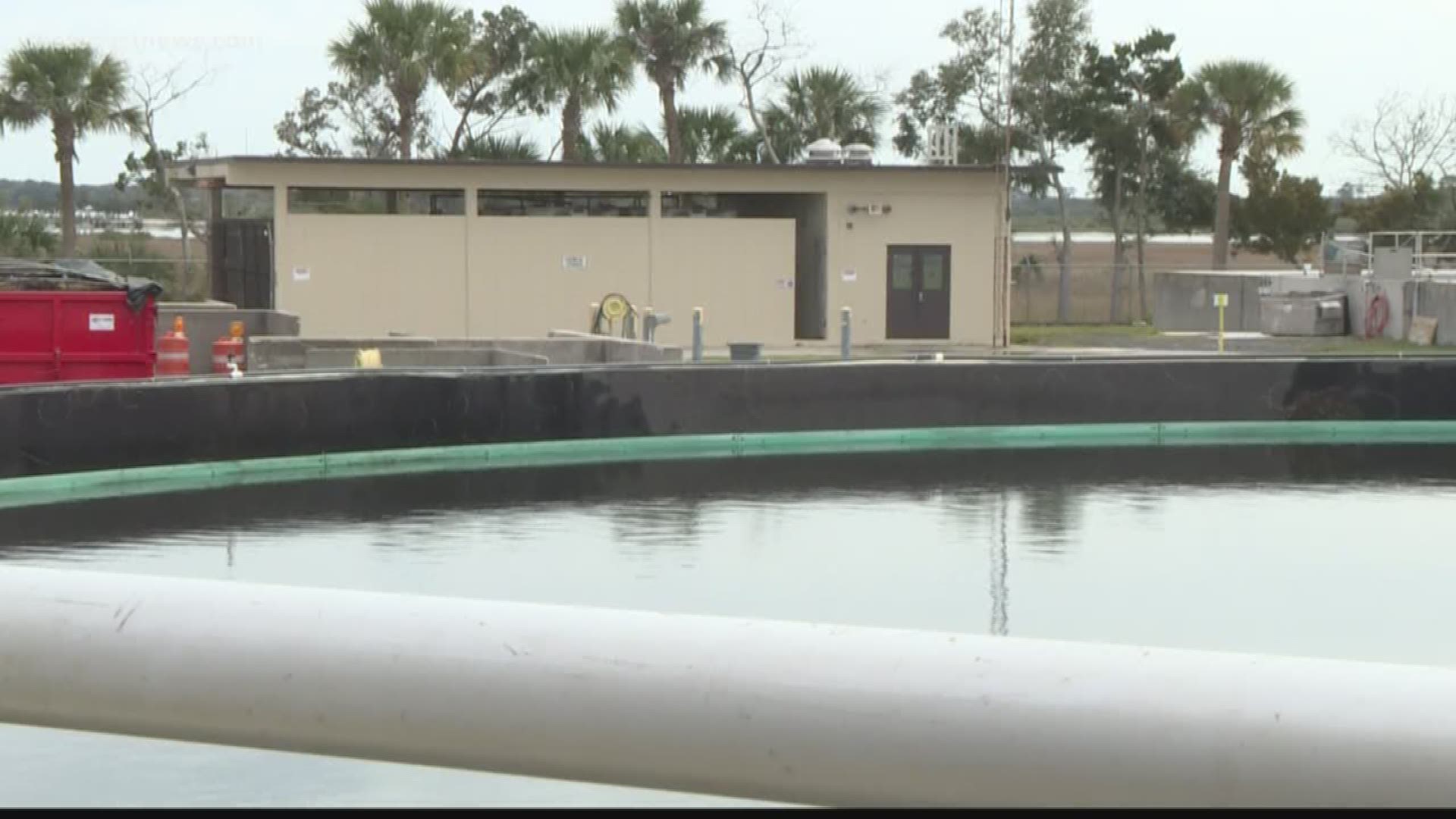ST. AUGUSTINE, Fla. — St. Augustine's wastewater treatment plant has been described as the city's most exposed piece of infrastructure.
If the plant flooded, the Intracoastal Waterway that runs through the city could be inundated with untreated sewage.
With the threat of stronger storms and rising sea levels, it's a major issue.
Steve Curmode is the Supervisor at the St. Augustine Wastewater treatment plant which sits on the Matanzas River.
As he stood inside the building that holds the plant's computers and electronics, he said, "All that has to happen in here is we get eight inches of water in here and the electrical shuts off."
If the brain center -- that sits at ground level -- floods, the plant won't work.
Curmode said, "What that would mean is what you put down the toilet isn't being treated when it goes out to the river."
Public Works Director Mike Cullum said, "The sludge would build up and overflow the wastewater treatment plant and basically flood the Intracoastal Waterway with e-Coli, bacteria and all that stuff that's in the waste stream."
This plant is low lying only seven feet above sea level. It was seen flooding before with Hurricane Matthew. The city government is considering what it can do to protect the wastewater system from stronger hurricanes such as Michael that hit panhandle and from rising sea levels.
"It's the most exposed asset we have in the city," Cullum said.
One option is to build a new wastewater plant, but it's pricey.
Mayor Nancy Shaver said, "That is probably $100 million and we have a $50 million annual budget."
Another possibility is to hook up to St. Johns County's sewer system, but the county would have to agree to that.
And another option is to literally build a wall around the entire plant.
"It would be a sheet pile wall," Cullum said.
A consultant's study shows that the taller the wall, the more expensive it would be. Cullum said the tallest wall considered in the study would be 25 feet high to protect against a category 5 hurricane and sea level rise for the next 30 years.
A 25-foot wall would be about five feet above the tallest point at the plant.
"The cost for the wall would be around $5 million," Cullum noted, "versus the $80 million to $100 million to move the plant."
The city could seek money from the state, from FEMA, and other sources to help pay the bill.
The threat of flooding at the plant, either from hurricanes or from rising sea levels, has many in the city government realizing this vulnerability is one it can't ignore.

